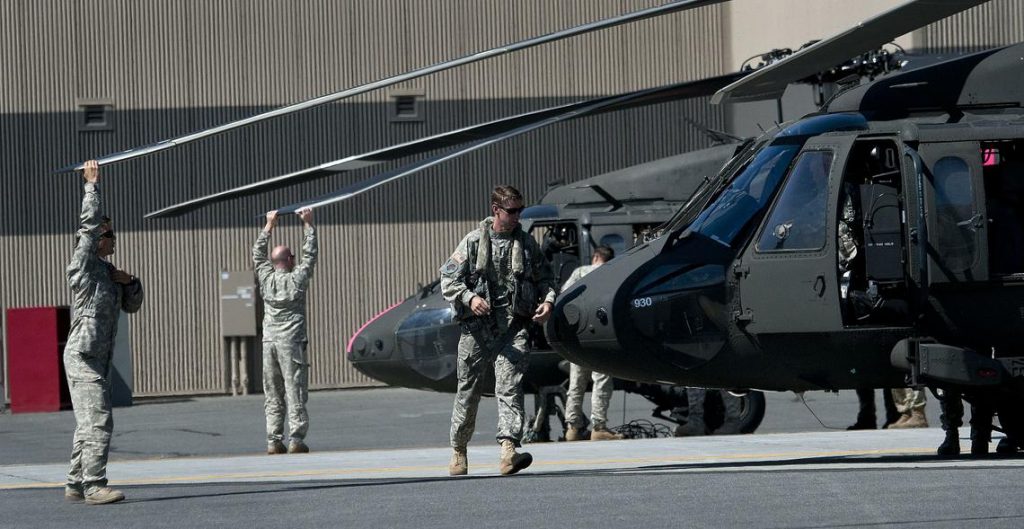Military aircraft activate to support wildland firefighting efforts in Eastern Washington
Posted on
According to the Washington DNR, there are nearly 1,500 firefighters working to control 18 active wildfires burning in Eastern Washington on more than 21,000 acres.
Also, nearly 150 Washington National Guardsmen have been activated to support wildland firefighting efforts in Eastern Washington.
According to The Spokesman-Review, two Black Hawk helicopters deployed from Joint Base Lewis-McChord on Wednesday morning are joining firefighting efforts in Eastern Washington.
Chief Warrant Officer 5 Noel Larson said he has been flying for 25 years. This is his seventh time being called out to help with fires.
Two hand crews from the 176th Engineer Company, headquartered in Snohomish; three hand crews from the 141st Air Refueling Wing, headquartered at Fairchild Air Force Base; and two UH-60 Black Hawk helicopters from the 96th Aviation Troop Command, based out of Joint Base Lewis-McChord, will work together to attack smaller wildfires that are popping up on the east side of the state.

Meantime, an RC-26 aircraft from the 141st Air Refueling Wing in Spokane is supporting the National Interagency Fire Center for the third summer in a row to map known wildfires across the Pacific Northwest, detecting potential fires and lightning strikes with infrared camera equipment and providing real-time intelligence to fire crews on the ground.
This year’s firefighting effort will be different from previous years. Very large fires in California have taken its toll on resources in surrounding states, leaving Washington with few assets to fight local fires. The engineers from the 176th will be used as initial attack – meaning that in some areas they will be the first to arrive at an incident and take all the actions needed to prevent the fire from doing further damage.
The RC-26 aircraft is a unique piece of equipment operated by the Washington Air National Guard and is in demand not just in Washington state, but Oregon and Idaho, as well. The aircraft travels at 17,000 feet and is not only able to see new fire starts on the ground, but also able to relay that information immediately to a terminal that displays sensor data and video on the ground with fire crews. That allows fire crews to make decisions on where to send in manpower and how to fight a fire right away, said Lt. Col. Jeremy Higgins, 141st Operations Group RC-26 program manager.

“Through mapping we have been able to assist with the civilian evacuations,” Higgins said. “Just this year, we were able to help families stay in their homes and not force them to evacuate because we provided information showing the fire was not moving toward them.”
The plane can also detect lightning strikes before a fire has even started and get that information to the National Interagency Fire Center in less than 15 minutes, Higgins said. This allows for smoke jump teams to get out and fight the fire before it becomes a massive and dangerous fire.
“We have already stopped seven fires just this year from growing into larger fires, saving property and helping keep resources on other fires,” Higgins said. “No one likes fires. This is a great opportunity to help our neighbors.”
Subscribe to our newsletter
Promotions, new products and sales. Directly to your inbox.
